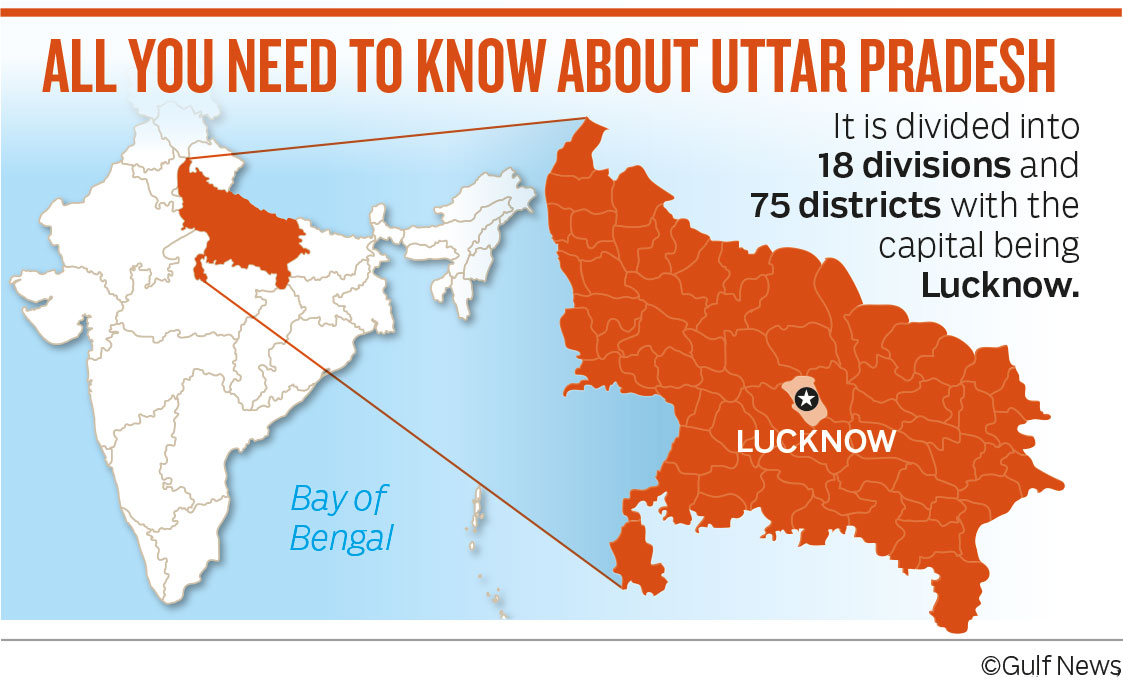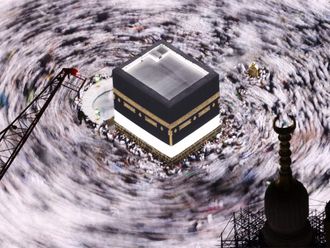_resources1_16a3106f40d_medium.jpg)
New Delhi: India’s two most powerful regional parties have decided to fight elections together in the country’s most populous state, taking aim at Prime Minister Narendra Modi’s bid to retain power in federal elections due by May.
Mayawati, leader of the Bahujan Samaj Party (BSP) and Akhilesh Yadav, head of the Samajwadi Party (SP), jointly said they will together contest 38 each of the 80 parliamentary seats in the northern Uttar Pradesh state, forming a formidable alliance to challenge Modi’s Bharatiya Janata Party (BJP). The group won’t field candidates in the remaining four seats, which includes two constituencies represented by leaders of the Indian National Congress party. The political arithmetic behind the alliance could alter the outcome of the federal elections, for, as the cliche goes, the road to Delhi lies though Lucknow for any political party in India.
So what is so special about this tie-up?
The development represents the biggest electoral threat to BJP, which won 71 seats in Uttar Pradesh in the 2014 national elections, significantly contributing to Modi’s thumping majority in the lower house of parliament. It is also a setback for the opposition Congress party, which is trying to forge an alliance with regional parties to take on the BJP.
Why is a seat-sharing pact in Uttar Pradesh so significant?
With a population of 204 million — about the size of Brazil — Uttar Pradesh sends more lawmakers than any other state in India to both houses of parliament. It is India’s most populous state and accounts for about a sixth of all members of the parliament. Barring a couple of exceptions in the 1990s, the political party winning the most number of seats there has historically helped form the federal government.
But aren’t the BSP and SP bitter rivals in state politics?
Both the SP and the BSP are essentially socialist parties which command large support bases among Uttar Pradesh’s working class and are led by former chief ministers. While they have been traditional (and often bitter) rivals at the state level, there are past precedents of the two parties coming together for political convenience to form a government. “Our common goal is to defeat the BJP,” said Yadav, former chief minister of Uttar Pradesh. “We will fight the BJP’s authoritarian rule.”
According to Mayawati, also a former chief minister in the state and an icon of the country’s traditionally oppressed Dalits who were once known as untouchables, the votes “get consolidated successfully when we tie-up with the Samajwadi Party”. She added: “We believe that we will dethrone the BJP.”
How successful is this alliance likely to be?
The projection of a successful SP-BSP alliance is based on 2017 data, which may not necessarily hold entirely in 2019. This is because no two elections are the same, and the personal popularity of Modi is likely to be an important factor in the parliamentary elections. Also, notwithstanding Akhilesh Yadav’s call to cadres to respect Mayawati the way they would respect him, the workers of the SP and BSP have been old political rivals — and whether the electoral arithmetic can translate into victories on the ground will depend heavily on the transfer of each other’s votes.
What’s behind the effort to stitch together a grand alliance in India?
Opposition parties across the country received a fillip last month, when India’s ruling BJP lost power in three states and dealt Modi his biggest defeat since he took office in 2014. That was also a boost for the Congress party, which ruled India for nearly four decades since its independence from Britain in 1947, and is working to build a so-called “grand alliance” with other parties in preparation for the vote to defeat Modi and the BJP.
What happens to the Congress party in the state?
Although the Congress is not a part of the alliance in Uttar Pradesh, the move leaves scope for political realignment among opposition parties after the election. The parties agreed not to field candidates in Amethi and Raebareli that Congress President Rahul Gandhi and his mother Sonia Gandhi will contest. The Congress party has said it will contest all the 80 parliament seats in Uttar Pradesh in the upcoming elections. “We will fight all 80 seats in Uttar Pradesh in the Lok Sabha elections. We are fully prepared. And just like the Congress emerged the number one party in Uttar Pradesh in 2009 Lok Sabha elections, it will happen again in 2019,” Congress leader Ghulam Nabi Azad said. However, the party also seemed to keep the door open for future realignments. “We had earlier also said that we are ready to walk with every party that wants to defeat the BJP. But we can’t force anyone,” he said.
Should Modi and his party be worried?
“It will worry the BJP as these regional parties are the real challenge,” said Ajoy Bose, a Delhi-based political analyst who wrote a biography on Mayawati. “The BJP will lose seats and it will be very difficult for it to get a majority.” The BJP, SP and BSP contested against each other during the state elections in March 2017, which the BJP comfortably won, but political analysts say an SP-BSP alliance could affect the ruling party’s prospects. The BJP had a 40 per cent vote share in the state polls, the BSP and SP put together accounted for 44 per cent. To be sure, voting patterns could be different when the world’s largest democracy goes to polls.
What does the BJP say about the alliance?
Despite recent setbacks, the BJP is confident of winning elections in Uttar Pradesh, its president Amit Shah said in a televised address. “We will win 74 out of the 80 seats in Uttar Pradesh,” he said. But an India TV-CNX opinion poll taken in December found that the BJP is likely to suffer a loss of 31 seats compared with 2014 elections even without an opposition alliance. Without taking into account of the latest development in Uttar Pradesh, the poll said the BJP’s coalition may only win 257 seats in the general election, 15 fewer than the half-way point in the 543-seat lower house.

• Abbreviated as UP, the northern Indian state of Uttar Pradesh is the most populous state in India as well as the most populous country subdivision in the world.
• The state was created on April 1, 1937 as the United Provinces of Agra and Oudh during British rule, and was renamed Uttar Pradesh in 1950. It is divided into 18 divisions and 75 districts with the capital being Lucknow.
• The population of UP as per the latest census stood at 204 million — about the same as Brazil.
• Uttar Pradesh sends 80 lawmakers to the lower house of Indian parliament — more than any other state in India. In total, it accounts for about a sixth of all members of the parliament.
• Despite the strategic significance and having been ruled by different parties since independence, Uttar Pradesh remains one of India’s most backward states.
• It is notorious for its crime rate and unlicensed gun use, has below average literacy levels and a low human development index, in addition to worrying levels of population growth.








